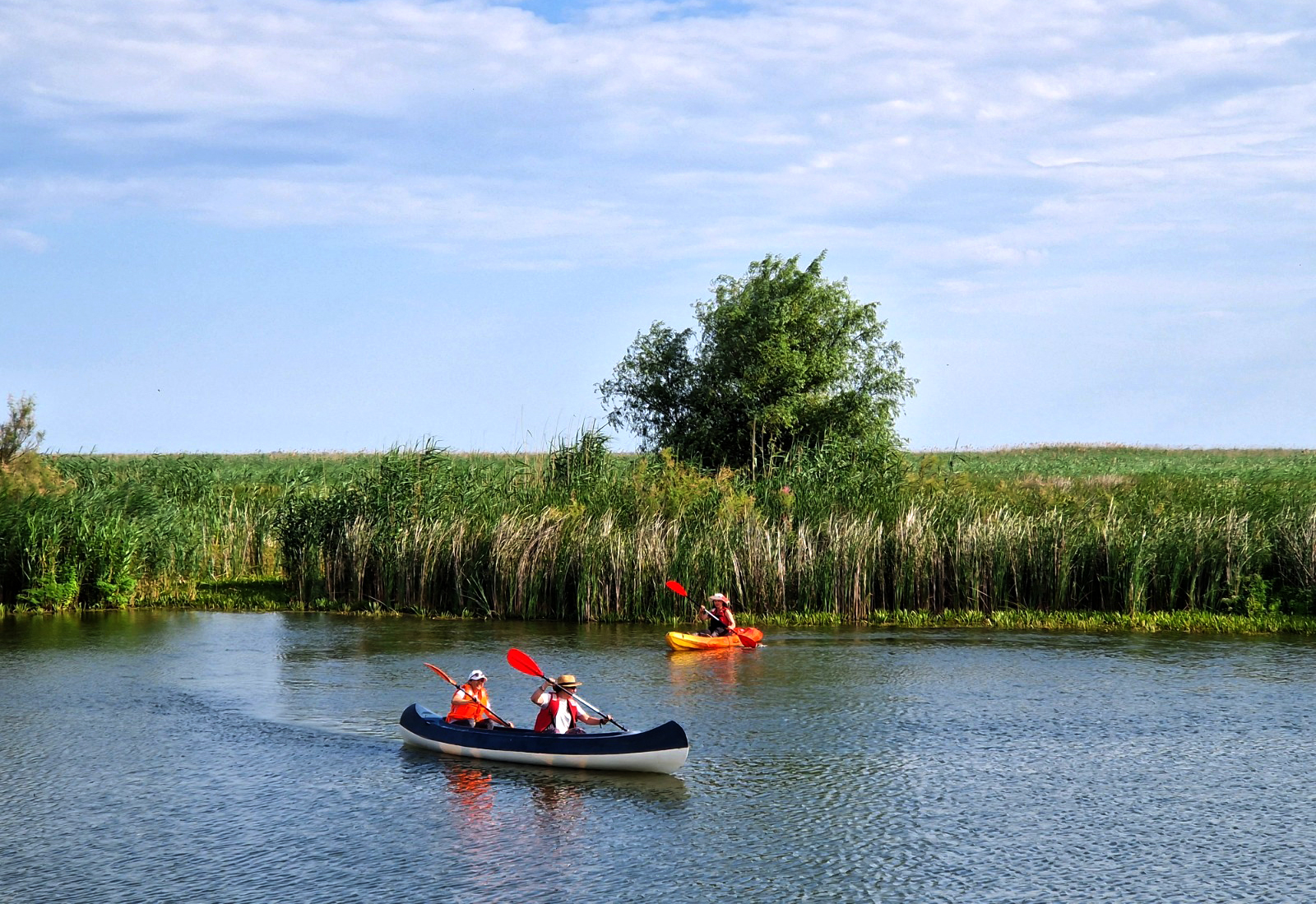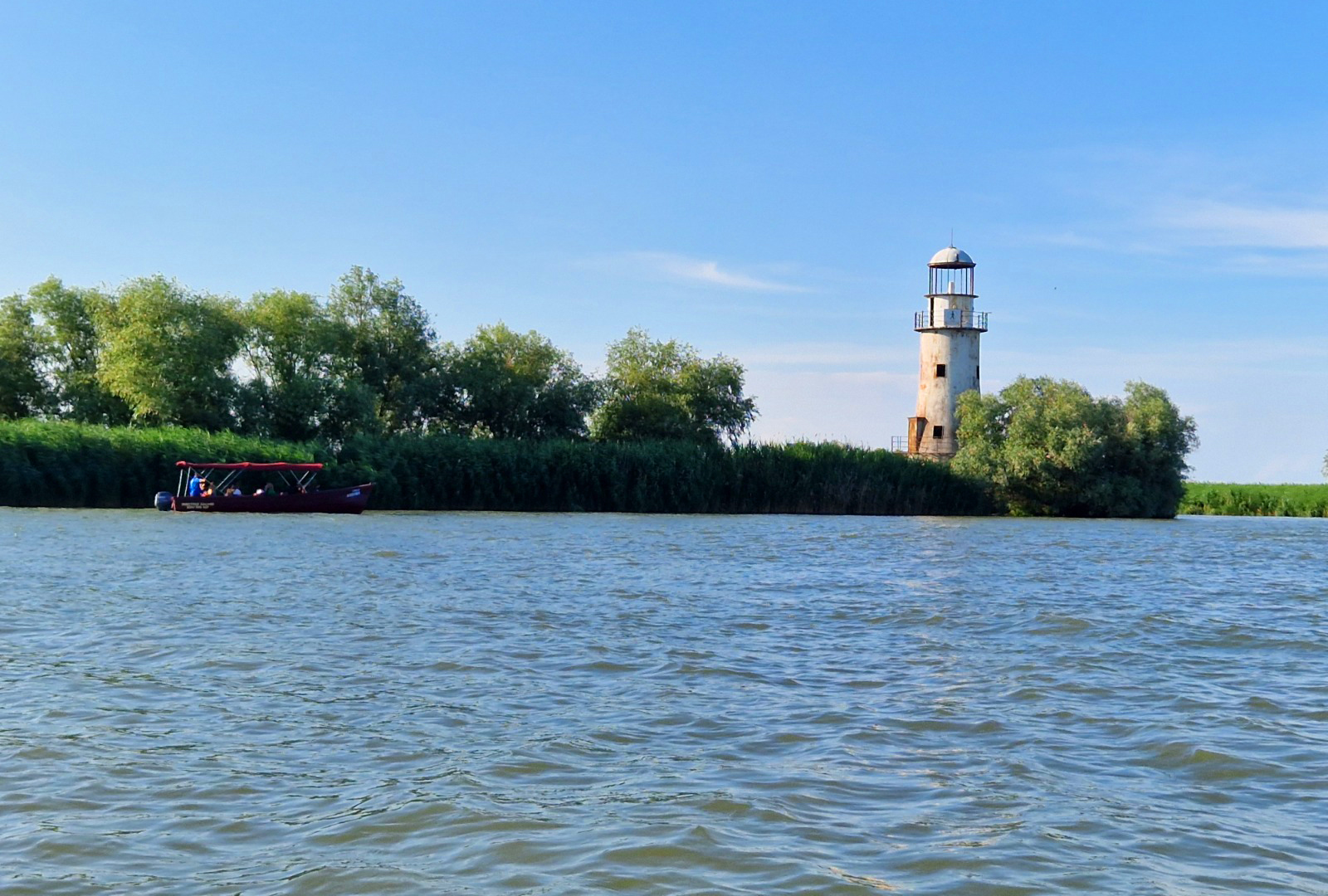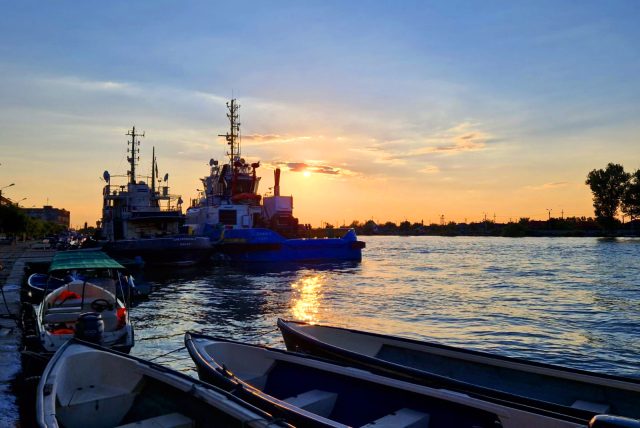
An old conflict between Ukraine and Romania is back in the news and headlining the Romanian press. It’s about the Bystroe Channel, which the Ukrainians want to make navigable.
Despite humanitarian aid from the early days of the Russian invasion, Ukraine is in total defiance of Romania. The neighbouring state of a NATO country, despite being at war with Russia, is carrying out dredging work on the Bystroe Channel. Environmental experts warn that if Ukrainian state intervention in the water depth of the Bystroe Channel continues, it will be an ecological disaster for the Danube Delta, a UNESCO heritage site. Since 20 years ago, specialists have drawn the attention of public opinion and political decision-makers to the fact that a possible deepening of the Bystroe Channel will affect the flow of the other branches of the Danube (Sulina and Sfȃntu Gheorghe on Romanian territory), which would obviously generate ecological and economic chain effects on the Romanian state.
Ukraine has ignored all international treaties and has been dredging the Bystroe Channel for more than a year
The Ukrainians have ignored all international warnings and, after the outbreak of war with Russia, have restarted dredging on the Bystroe Channel in order to have a navigable outlet to the Black Sea with large ships so they can export their grain and other raw materials without paying taxes to the Romanian state. It is well known that for crossing the Sulina Channel, the only navigable channel in the Danube Delta that is internationally recognised, any shipowner must pay a transit tax. Moreover, the actions of the Ukrainian state may lead beyond an ecological disaster on the Danube Delta to the fact that the only internationally navigable channel of the Danube, the Sulina Channel, may become unfit for navigation due to the decrease in water flow.
It is well known that Romania shares a border with Ukraine in the Danube Delta area on the 111 km long Chilia Arm. About 60% of the flow of the Danube flows through this arm. Of the 111 kilometres of the Chilia Arm, about 85.5 kilometres represent the border between the two Eastern European states, according to the Russian-Turkish Treaty of Bucharest of 1812, and according to the Romanian-Soviet border established on the 24th of October 1940 and confirmed by the 1947 Paris Peace Treaty. The Bystroe Channel on Ukrainian territory provides a direct link to the Black Sea from the heart of the delta formed by the Chilia arm.

Since last December, according to a tracking application, which can be checked on the marinetraffic.com website, it turned out that Ukrainian state representatives had carried out dredging works with two vessels. One of the vessels is sailing under the Tanzanian flag and the other under the Greek flag. The tracking application showed every nautical mile travelled by the two dredging vessels which carried out dredging works by sucking sludge from the bottom of the Bystroe Channel.
The Romanian-Ukrainian dispute over the Bystroe Channel goes back almost 20 years. Ukraine’s intention to make the Bystroe Channel internationally navigable and integrable into the trans-European transport network TEN-T dates back to 2004, long before the Russians invaded the country and thus long before Odessa, Ukraine’s main Black Sea port, was blocked. According to the documents transmitted by the Ukrainian state, including the Romanian side, the Ukrainians want the dredging operation to reach a depth of eight meters in the Bystroe Channel.
Romania asks Ukraine to allow measurements on the Danube
Regarding the scandal triggered by the works on the Bystroe Channel, Romania’s Foreign Minister Bogdan Aurescu said in a televised intervention that he does not want to get into political disputes on such serious issues, which are part of Romania’s foreign policy.
“I don’t want to get into political disputes on such serious issues, which concern Romania’s foreign policy, and I am convinced that such disputes are not looked upon favourably either by Romanians or outside Romania. I want this matter to be resolved as soon as possible and I do not want to make headlines. The Ministry of Foreign Affairs does not have the competence to verify on the spot the depths on the Danube, because we have neither the experts nor the necessary specialisation. However, we have been very quick to do everything that the Ministry of Foreign Affairs has to do: we have informed the European Commission, as we have done in previous years – and we have been in constant dialogue with Commissioner Vălean, last year and even these days – that Romania does not agree with the inclusion of the Bystroe Channel in the TEN-T network, that network of trans-European waterways. We have also very promptly asked the Ukrainian side to clarify this information that has appeared publicly about the deepening of the Bystroe Channel”, Foreign Minister Bogdan Aurescu said.
Ukrainians need support, not to be scolded
Romania’s President Klaus Iohannis has spoken softly of the neighbouring state’s actions to deepen the Bystroe channel. According to Klaus Iohannis, the Ukrainians must be supported at this time, not scolded, and the discussion must be made with hard data, referring to the work that is actually taking place.
“There is a legitimate concern for the Danube Delta, but we should not mix the concern and concrete measures to preserve biodiversity with various political approaches of the moment. Let me tell you that the channel has been dredged for years because the Ukrainians use it for navigation. Obviously, these issues are limited by international agreements and must be respected by all parties. In order to know what is going on there, we need to talk to the Ukrainians, but that has not happened. The Ukrainians have asked for discussions at expert level and with the Ministry of Transport and the Ministry of Environment and other levels. These discussions have not taken place, but our own, inflamed and determined, are making claims that are not yet substantiated. Whether this is so or not is worth checking, but I think it is worth checking with them. After all it is Ukrainian national territory. I think it is very good that our politicians, before making inflammatory speeches, should let the experts see what is really happening there, whether or not the international legislation is being complied with, to discuss it bilaterally, but also with the European Commission in order to take the necessary measures. I do not think it is appropriate at this time to attack the Ukrainians on the basis of uncertain data. They don’t need to be scolded now, they need support”, Klaus Iohannis said in connection with the Bystroe Channel scandal.
Ukraine says it has not breached any agreement but admits deepening the Bystroe Channel
Ukraine, invaded by Russia a year ago, announced to the Romanian side in mid-February that the draught of ships passing through the Bystroe Channel had been deepened from 3.9 metres to 6.5 metres. Yuri Vaskov, Ukraine’s deputy infrastructure minister, has reacted in the row over the dredging of the channel. Vaskov claims that Ukraine has not violated any international agreements by deepening the Bystroe Channel.
“Ukraine has not violated any agreement by deepening the Danube’s Bystroe Channel to increase its food exports from its river ports and is ready to show Romania the work it has done. We formally notified the Romanian side in August 2022 that we would carry out dredging operations, such as sediment removal, and have received no comments. We see no problem. It is not a new construction but an operational deepening. The dredging operations are intended to keep the channel deep enough to allow vessels with a draught of up to 6.5 metres,” said Ukraine’s Deputy Minister of Infrastructure Yuri Vaskov.
Romania has expressed concern over indications that the neighbouring country has carried out dredging works on the Bystroe Channel that impact a shared coastal area with direct ecological impact on a UNESCO heritage area. Romanian officials have asked to be allowed to verify the area. Ukraine has disagreed on the issue of the work on the Bystroe Channel. The Ukrainian Ministry of Infrastructure announced in a Twitter post on the 17th of February that Ukraine had deepened the Bystroe Channel, although Kiev’s diplomats in Romania gave assurances that maintenance work was being carried out. Political sources claim that institutions under the Romanian Ministry of Transport have concluded that the Ukrainians have dredged at least to a depth of 7 metres on the Bystroe Channel, without the Romanian side being informed.
European Commission gets involved in the Bystroe scandal
The European Commission has reacted to the scandal surrounding Ukrainian work on the Bystroe Channel. European officials deny that the European Commission is involved in or in agreement with the work and have asked Ukraine for further information. The Ukrainian Ministry of Transport replied that they are indeed carrying out operational (maintenance) dredging at the berths of their Danube ports and other places on the Danube to ensure safe navigation. However, Ukraine denied that major works are ongoing or planned on the Chilia arm or the Bystroe Channel. In addition, Ukraine reaffirmed that it will strictly respect and adhere to all relevant international agreements and conventions,” reads a European Commission press release issued by the Representation of the European Commission in Romania.
Why is the Bystroe Channel important for Ukraine and why is Romania opposed?
The Ukrainian project for the construction of the Bystroe Channel has been a major irritant in diplomatic relations between Romania and Ukraine for almost 20 years. Romania has complained at international level that the construction of the Bystroe Channel could have a serious impact on the environment and the Danube Delta, a UNESCO World Heritage site.
Construction on the channel, which links the Chilia arm to the Black Sea, began in 2004. The Ukrainian authorities started work on the channel on the 11th of May 2004. The project was intended to provide an alternative route for sea vessels to access the ports of the Lower Danube. Romania has asked Ukraine to stop the project in accordance with international treaties, as the new link between the Danube and the Black Sea violates a number of international environmental conventions.
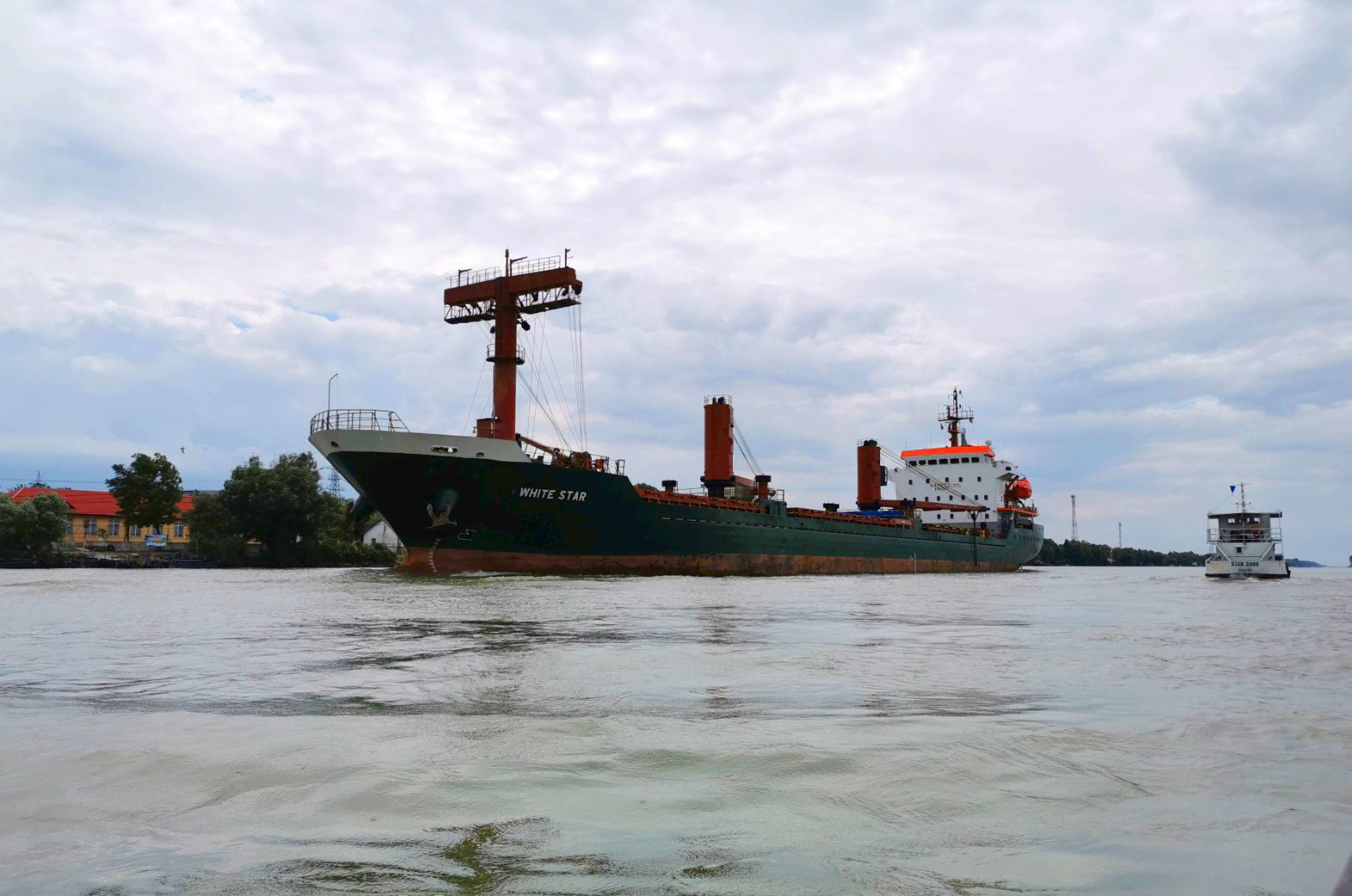
The first technical information about the Bystroe project was provided to the Romanian side only in April 2007. Then, as now, Kiev ignored the warnings of the Romanian authorities and international environmental organisations. The company managing the project announced a few years ago that it intended to complete the development work at Bystroe by 2011. In the meantime, the work has been halted and in 2020, following years of debate and condemnation by several international conventions, Ukraine announced that it was abandoning the completion of the original project. Of course, this did not happen.
Chronology of facts on official acts / correspondence between the relevant ministries of the two countries
09.02.2022: The Cabinet of Ministers of Ukraine approved Resolution number 136 which provided for the deepening of certain areas on the Chilia arm and the Bystroe Channel. Continuation of dredging work on the channel 2 weeks before the war
22.06.2022: The Ministry of Environment of Ukraine sent a notification to the Ministry of Environment of Romania asking for consent for works, WARNING: only in the port of Izmail.
04.07.2022: The Ministry of Environment of Romania sent a notification to the Ministry of Transport and Infrastructure of Romania requesting a point of view on the request of the Ukrainian side.
12.07.2022: The Ministry of Transport and Infrastructure of Romania replied to the Ministry of Environment of Romania with a point of view stating that it does NOT agree with the works even those concerning the Ukrainian port of Izmail.
04.08.2022: The Ministry of Environment of Romania, on the basis of that point of view of the Ministry of Transport, sends in turn to the Ministry of Environment of Ukraine an information stating that it does NOT agree with the works.
However, on 16.02.2022 the shipowners were informed that the depth of the Bystroe Channel was 6.5 metres, up from 3.9 metres. In other words, the Bystroe Channel is navigable like the Sulina arm.
Ukraine’s economic interest
Yuri Vasckov argues that bringing the Bystroe channel to a navigable depth of 6.5 metres would allow grain exports from Ukraine without paying duties to neighbouring Romania.
“There has been such a project for many years, but at the moment it is not implemented. Here Romania did not agree to the implementation of the project. It is in Ukraine’s economic interest and is necessary in the medium term, but discussions are still ongoing. Any action could be carried out when there is an agreement with Romania,” said Yuri Vaskov.
In the 2022 season Ukraine’s grain harvest has dropped by almost half. In 2021 Ukraine had a record grain harvest of 86 million tonnes while in 2022 the grain harvest was only 54 million tonnes. Currently about 30 million tons of grain are in silos and could be exported, according to the Ukrainian Ministry of Agriculture.
Accident or economic sabotage? The Ukrainian ship Rostok ran aground in the Sulina Channel
We should recall an incident that happened 32 years ago, around the time when Ukraine was promoting the idea of bringing the Bystroe Channel to an internationally navigable level. On the 2nd of September 1991, off Partizani on the Sulina Channel (Romanian territory), the Ukrainian ship Rostok, built at the Heztun Rostok shipyard in the former German Democratic Republic at the end of its operational period, ran aground. There are theories that the grounding of the Rostok was premeditated in order to force the start of work on an alternative shipping route linking the Danube to the Black Sea as an alternative to the Sulina Channel. This alternative navigation route was in fact the development of the Bystroe Channel.
The ship Rostok sailed from the Ukrainian port of Reni to Tunisia with a cargo of over 5000 tonnes of steel products, mainly concrete iron. It ran aground perpendicular to the Sulina arm, at mile 31, with no human casualties. With a length of 117 metres and a weight of 5657 tonnes, the ship Rostok blocked the Sulina channel across its entire width, endangering the breakwater in the village of Partizani, washed by the Danube at a fast pace. The blockade of the Danube by the stranded Rostok left many vessels trapped downstream of Sulina. This halt in traffic on the Sulina Channel has meant losses of tens of millions of dollars for the Romanian state. Some of the commercial ships used the Danube-Black Sea Canal, where the distance and costs were much greater.
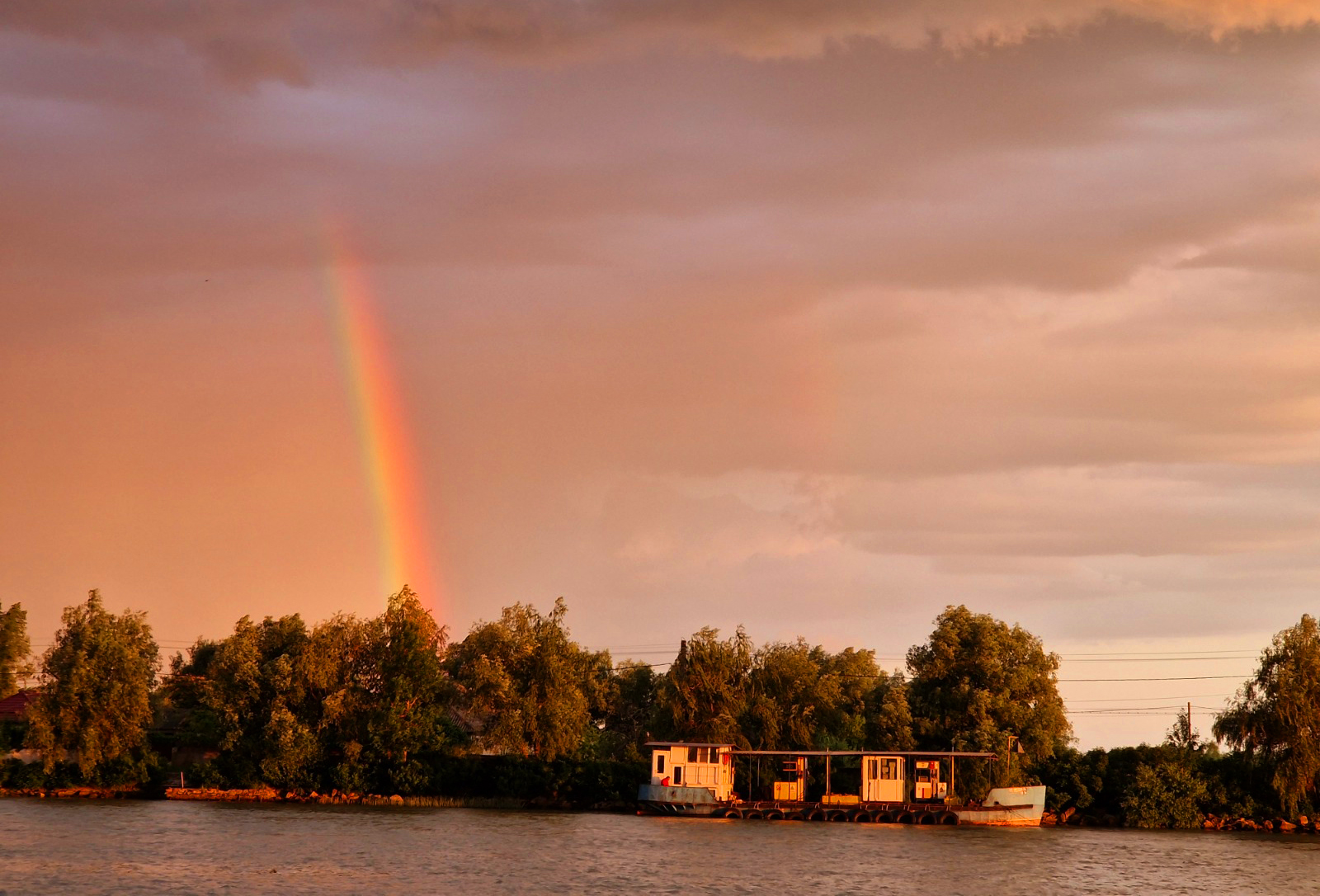
To free the channel, the Romanian state signed a contract with the Greek company Drossinos Elefterios in 1994, but the company failed to move the ship. The work was abandoned before 2004. In 2004, Ukraine inaugurated the first phase of the Bystroe Channel, prompting the Romanian authorities to reopen the tender to find a company that could remove the Rostok wreck. The consortium of Multraship (Netherlands), Titan (USA) and Deltacons (Romania) succeeded in cutting the Rostok into pieces on the 30th of November 2005, after 15 years.
The convention governing navigation on the Danube stipulates that access to the Black Sea is only through the Sulina Channel
The Convention on the Regime of Navigation on the Danube was signed in Belgrade on the 18th of August 1948 and ratified in Belgrade in 1970, together with the two annexes and the additional protocol. The signatory states were the Union of Soviet Socialist Republics (USSR, now Russia), the People’s Republic of Bulgaria, the Republic of Hungary, the Romanian People’s Republic (now Romania), the Ukrainian Soviet Socialist Republic (now Ukraine), the Czechoslovak Republic and the Federal Republic of Yugoslavia,
What does Article 2 of the Convention say?
“The regime established by the present Convention shall apply to the navigable parts of the Danube (river) from Ulm to the Black Sea, following the Sulina arm with access to the Sea through the Sulina Channel”.
Therefore, access from the Danube to the Black Sea for commercial vessels is exclusively through the Sulina Channel, not through the Bystroe Channel. The fact that Ukraine is not a member of the European Union makes it difficult to assess the role and measures taken by the European Commission in this diplomatic scandal deliberately provoked by the Ukrainian state.
Conclusions
The Ukrainian side started the works of the whole Bystroe project (not only in Izmail port as initially announced) without waiting for the Romanian state’s point of view, without following the procedures of the ESPOO Convention and without respecting other relevant international Conventions and Agreements on navigation on the Danube and UNESCO heritage.
It is not known exactly when the Ukrainian side started work on this project, both on the Chilia Channel and the Bystroe Channel.
It is certain that the Ukrainian state had the intention to start this project of dredging the Bystroe Channel even before the war with Russia started. Therefore, the claim that it was impetuously necessary to deepen the channel for the export of grain so vital to the Ukrainian economy is false.
Ukraine used the conflict situation with Russia as a cover to carry out works without the consent of Romania or the other signatories of the ESPOO Convention.
Under the pretext of the need to export grain for economic support as a result of the conflict with Russia, Ukraine has asked Romania (by way of exception to international and bilateral agreements) to allow third country flagged vessels to transit the Bystroe Channel. This was a first step to start dredging in the Bystroe Channel, with one of the dredgers flying the flag of Tanzania.
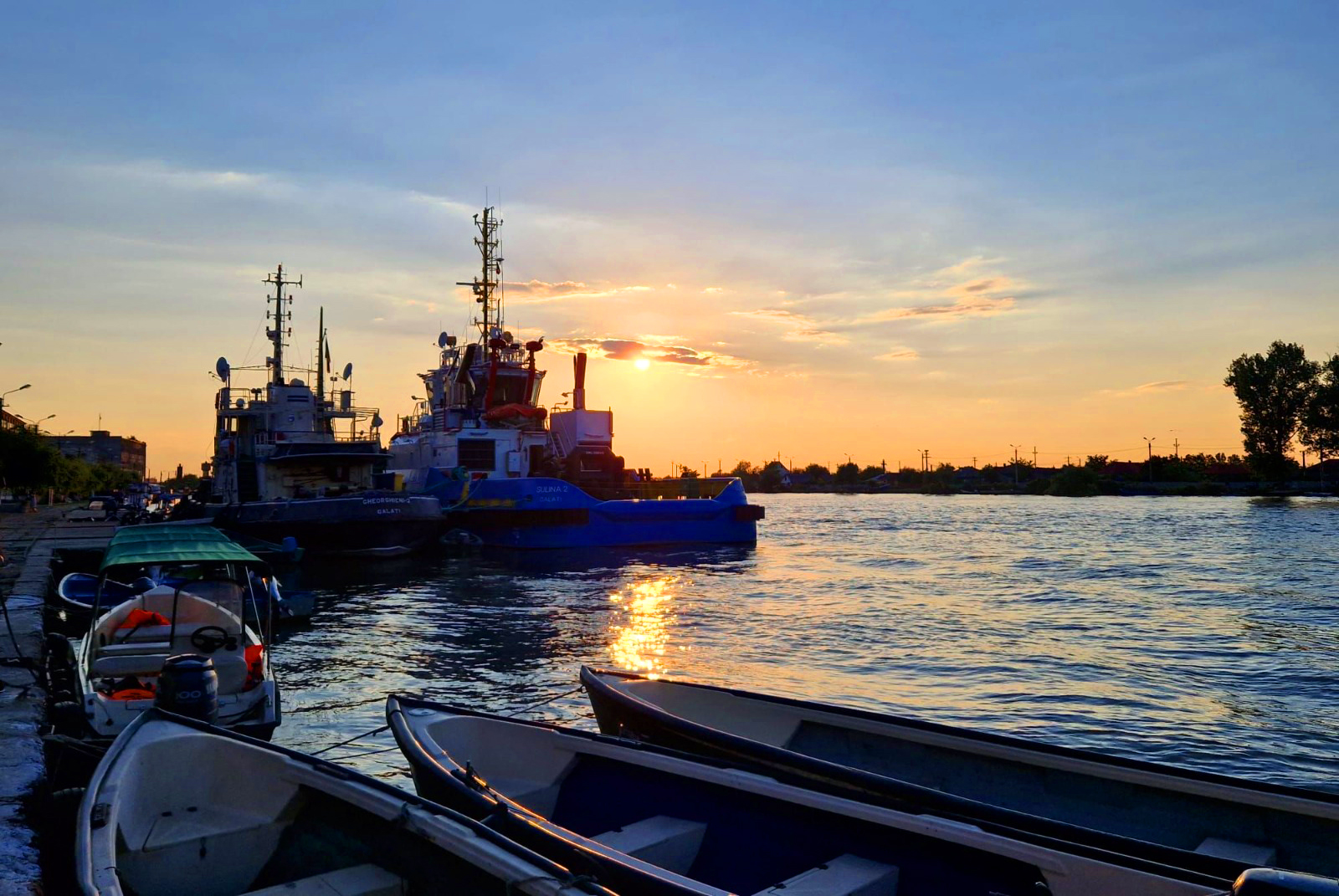
If the measurements to be carried out in the presence of Romanian representatives show that the depth of the Bystroe Channel is greater than 3.5 metres according to international agreements, there is no excuse for Ukraine to be sanctioned by the competent international authorities.
Photo by Eugen Olariu



 Subscribe
Subscribe